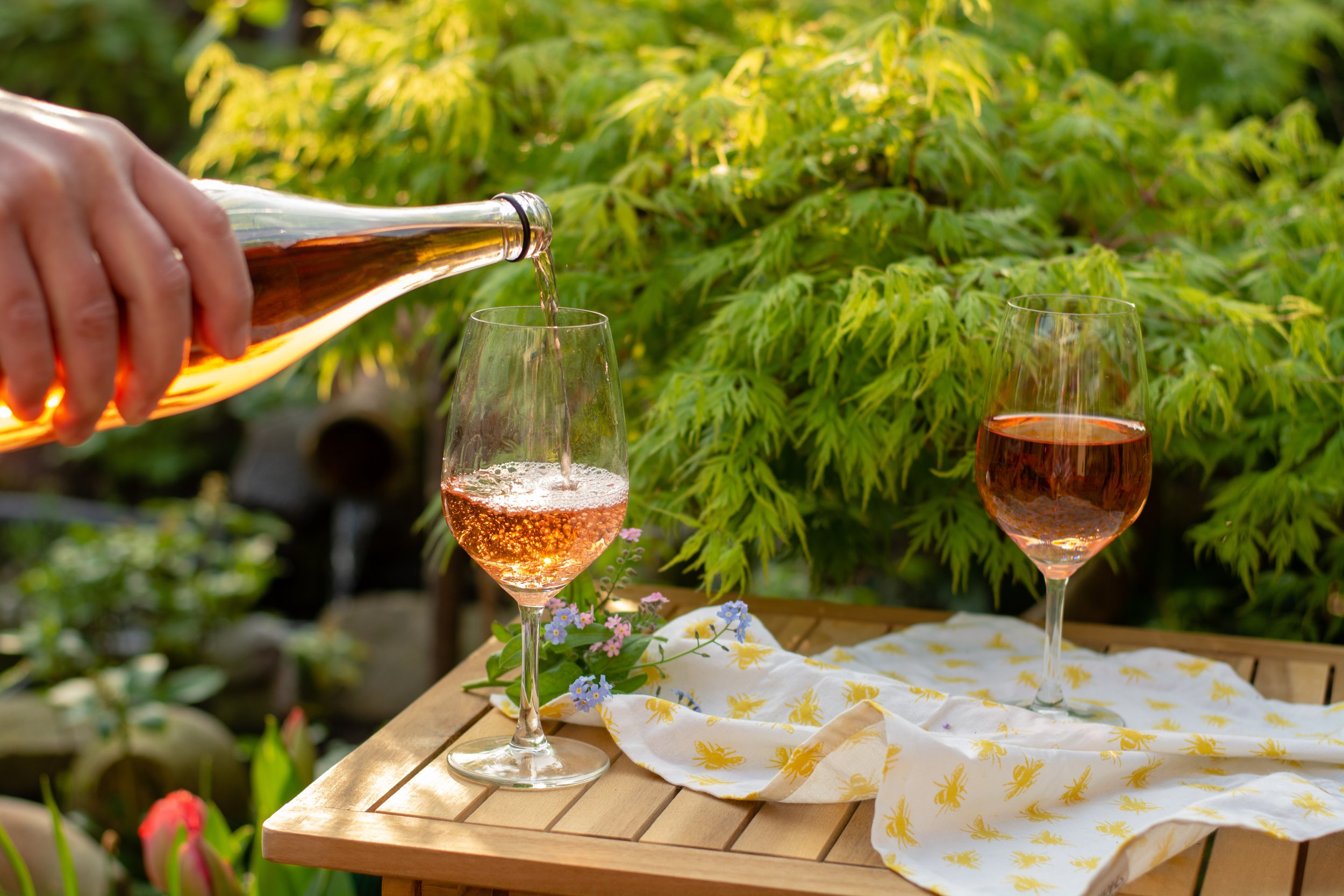
Make A Spirited Discovery
From bourbon to Bordeaux, we have you covered.
Classic New Zealand Wine Trail
The Classic New Zealand Wine Trail (classicwinetrail.co.nz) encompasses three principal wine regions: Hawke's Bay, Wairarapa, and Marlborough. Together, these regions account for over eighty percent of the country's wine production and provide wine enthusiasts access to 230 wineries and 120 cellar doors. This 240-mile, sign-posted self-guided journey is ideal for a five to ten-day trip and takes visitors along the East Coast of New Zealand, from Hawke's Bay in the North Island to Marlborough in the South Island. Along the route, you'll find 155 EV charging stations and myriad accommodation options to suit every traveler, from luxury lodges and boutique B&Bs to serviced apartments and historic cottages.
Photos courtesy Classic New Zealand Wine Trail
Right: Wairau River Winery in Marlborough photo by Mike Heydon
Rooted
Photographer Andy Katz and his son, winemaker Jesse Katz, embrace l'art de vivre through unique expressions of their craft.
Text: Bridget Williams
Image: Winemaker Jesse Katz walking between rows of grapevines at Farrow Ranch.
Photo by Rachid Dahnoun
History, Heritage, and Hospitality
For 300 years, the prestigious Bordeaux Maison Château Ducru-Beaucaillou has prided itself on welcoming friends and family for an unforgettable experience in Saint Julien.
Text: Bridget Williams
Image of Bruno-Eugène Borie and his mother Monique courtesy of Maison Château Ducru-Beaucaillou
Natural Selection
Historic Champagne house Leclerc Briant builds on its legacy as a pioneer in biodynamic winemaking.
Text & Photo: Bridget Williams
A Primer on Swiss Wine
Text: Claire Williams
Photography: Courtesy Switzerland Tourism
Swiss wines have quietly gained a reputation as an insider's gem within the global wine community. Despite Switzerland producing more than 26 million gallons annually, only two percent of that leaves the country. Within Switzerland's six distinctive wine-growing regions is an astonishing array of unique terroirs and an impressive roster of over 250 grape varieties under cultivation. This captivating tapestry comes to life when strolling through the picturesque vineyards or indulging in a wine tasting within the cozy confines of a local winegrower's cellar.
Secrets of a Wine Seller's Cellar
French wine connoisseur Jérôme Peter shares a few of his favorites.
Text: Claire Williams
Coloring Outside the Lines
A primer on orange and yellow wines.
Text: Claire Williams
DIVINEO: Breaking Tradition in Burgundy
To truly know French people, one must completely grasp their food and wine culture and the rules they abide by. The need to have a baguette accompanying every meal to soak up that leftover jus on your plate; the direct eye contact made with every santé as glasses raise in a toast; and the ritual of a coffee and cigarette on an outdoor terrace after a long day.
But then the question comes to mind: when is it the time to break those rules and go against tradition to create something truly exceptional? DIVINEO does just that in the wine world by breaking the traditional codes of French wine to give a new life and reputation to Vins de France.
Text: Claire Williams
Photos: Courtesy of DIVINEO
Old World, New Tricks
Germany's Oberhofer winery works with some of the oldest vines in the world using the newest know-how.
Text: Claire Williams
Pinot Off The Beaten Path
Written by Bonnie Graves
For lovers of this grape, a grape known for being finicky to grow and transcendent to taste, getting off the established pinot path is a great way to fully experience its many expressions. Pinot noir thrives in more marginal climates, and most particularly needs a strong diurnal shift to ripen while preserving trademark acidity. Warm days need to be offset by cool nights, and threats like mold, hail, frost, under-ripening versus burned skins, etc., all combine to make pinot noir farmers nervous. But when the microclimate is right, pinot noir can be epic.
Left: Master Sommelier Laura Rhys, Global Ambassador for Gusbourne Wines
Distilled History
Written by Chloe Gellar
As an ardent consumer of craft cocktails, I recall the rise of mezcal a few years ago, when the spirit was tapped (and some would argue pigeon-holed) to imbue a drink with a "smoky" flavor. And while mezcal and tequila are both distilled from agave, the former can display a broad range of flavor profiles, from bitter to bubble gum.
Archaeologists have estimated that humans began utilizing the agave plant 11,000 years ago for clothing, tools, and medicine. For thousands of years, the indigenous tribes of Mexico made pulque, a milky white alcoholic beverage made from the agave plant's leaves or sap. Spaniards were introduced to pulque during the Spanish Conquest. Once the liquor they brought with them ran out, the Spanish used their knowledge of distilling (learned from the Moors) to experiment with agave and create something with a higher alcohol content. The culmination of their efforts became mezcal.
A Rosé by Any Other Name
Written by Bonnie Graves
Once dismissed as sticky-sweet zinfandel juice – an American product accidentally invented during a fermentation disaster at Sutter Home Vineyards – pink wine has since made a huge market comeback in its more traditional, dry style. A “dry” wine is not to be confused with oak aging or other winemaker finishings; it’s simply defined as a wine in which all of the sugar present in the original grape juice is fully converted to alcohol during fermentation. Most of today’s more popular rosé wines follow this model, although some wineries still make sweeter pinks in which some residual sugar is allowed to remain in the completed wine.














